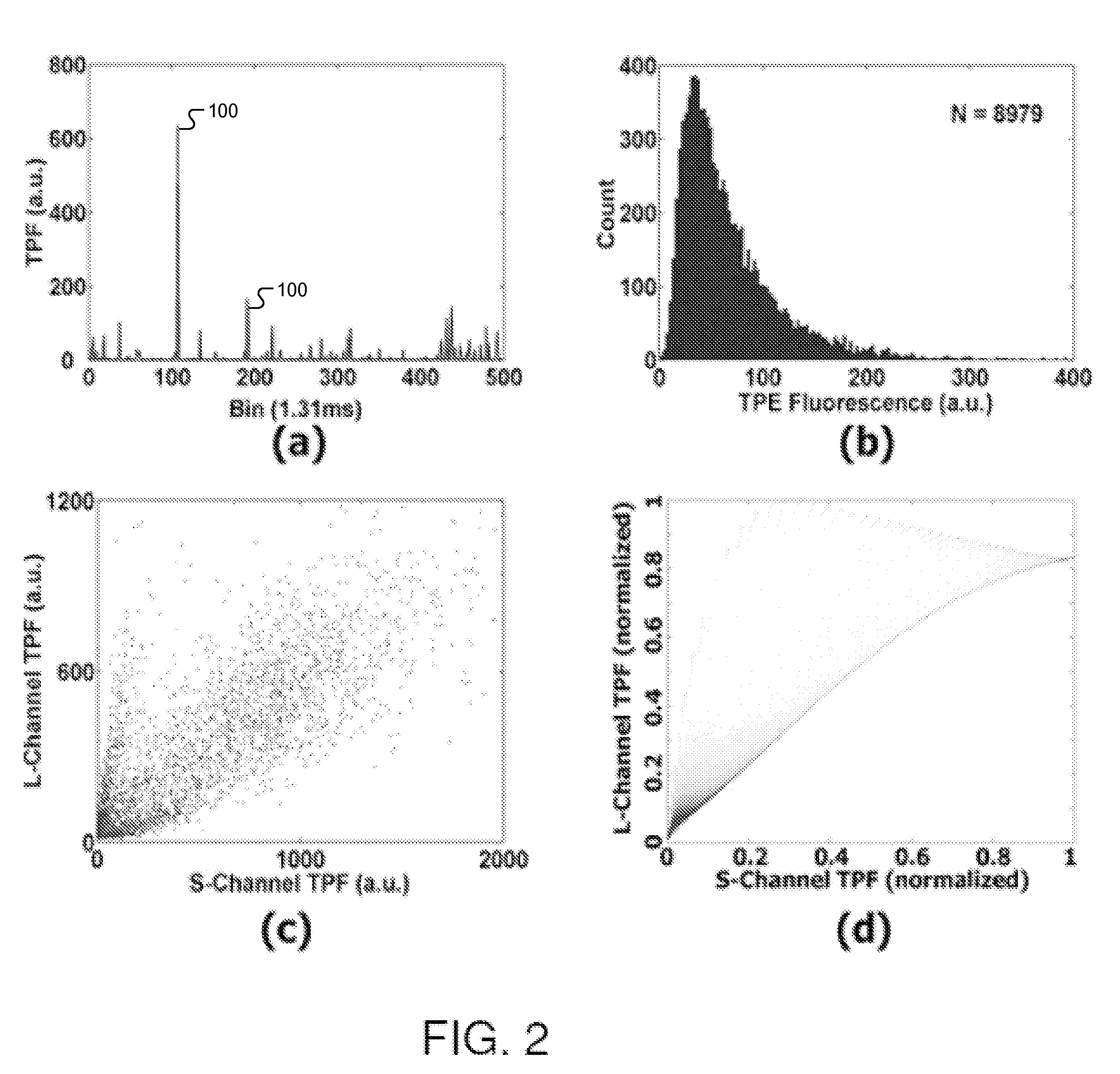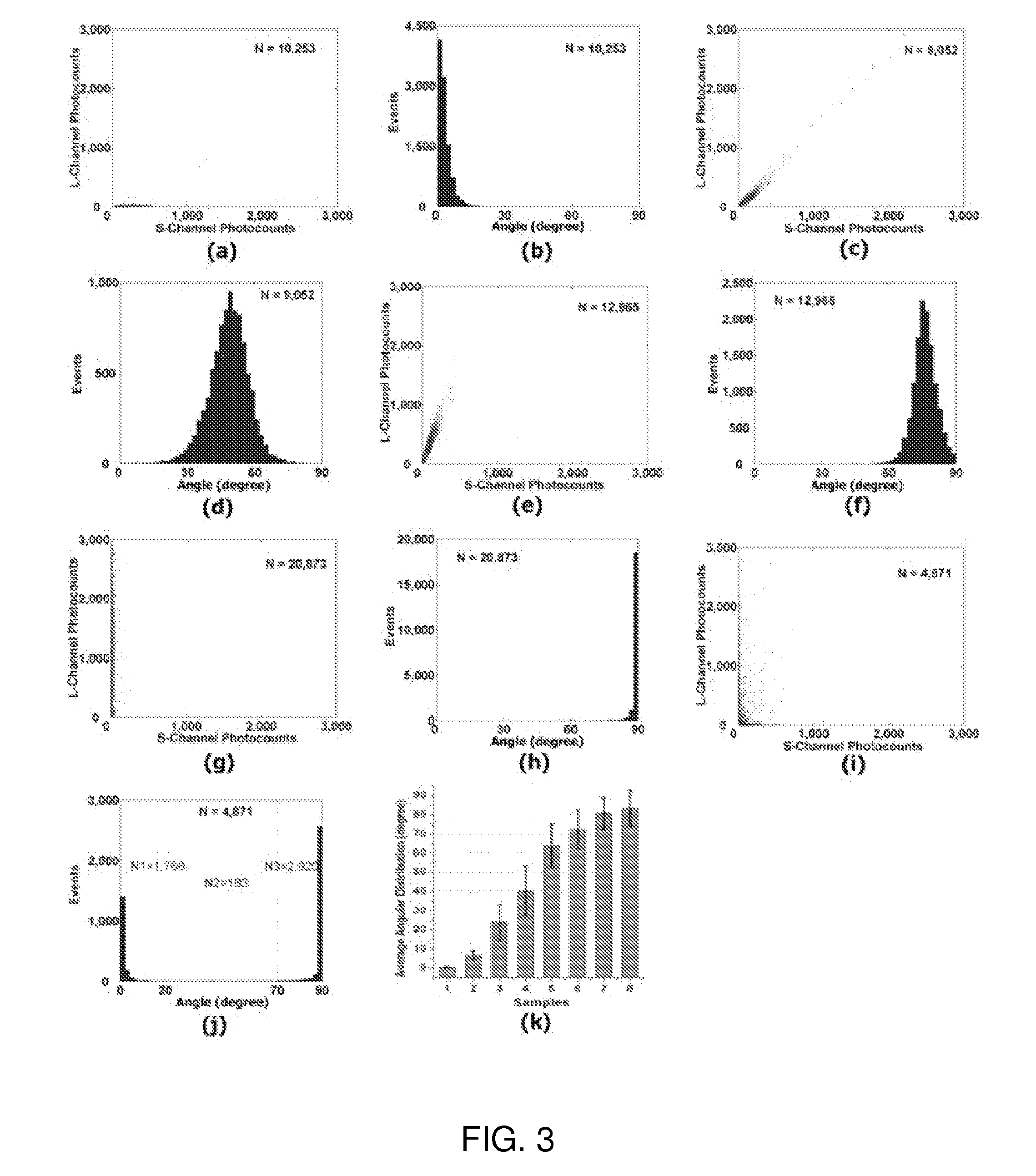Quantitative two-photon flow cytometry
a flow cytometer and two-photon excitation technology, applied in the field of flow cytometers, can solve the problems of strict requirements and limitations of conventional flow cytometers, complicated layout of such devices, and difficulty in achieving the effect of simple configuration
- Summary
- Abstract
- Description
- Claims
- Application Information
AI Technical Summary
Problems solved by technology
Method used
Image
Examples
Embodiment Construction
[0032]The following description of the preferred embodiment is merely exemplary in nature and is in no way intended to limit the invention, its application, or uses.
[0033]In contrast to conventional flow cytometer, the present invention provides a two-photon excitation using a femtosecond near-infrared (NIR) laser that enables multi-dye analysis to be performed very simply, with greatly relaxed requirements on fluid flow. As illustrated in FIGS. 1(a)-(b), a schematic representation of a two-photon flow cytometry system 10 according to the principles of the present invention is provided. A train of 50-fs pulses at 76-MHz repetition rate (typically with 10 mW average power), generally indicated at 12, is focused into a glass capillary tube 14 (typically 100 μm I.D.). A suspension of the cells to be measured, generally indicated at 16, is held in a syringe pump 18, which forces the suspension through capillary tube 14 at an approximately constant flow rate (typically 5 μL / minute). Howe...
PUM
 Login to View More
Login to View More Abstract
Description
Claims
Application Information
 Login to View More
Login to View More - R&D
- Intellectual Property
- Life Sciences
- Materials
- Tech Scout
- Unparalleled Data Quality
- Higher Quality Content
- 60% Fewer Hallucinations
Browse by: Latest US Patents, China's latest patents, Technical Efficacy Thesaurus, Application Domain, Technology Topic, Popular Technical Reports.
© 2025 PatSnap. All rights reserved.Legal|Privacy policy|Modern Slavery Act Transparency Statement|Sitemap|About US| Contact US: help@patsnap.com



